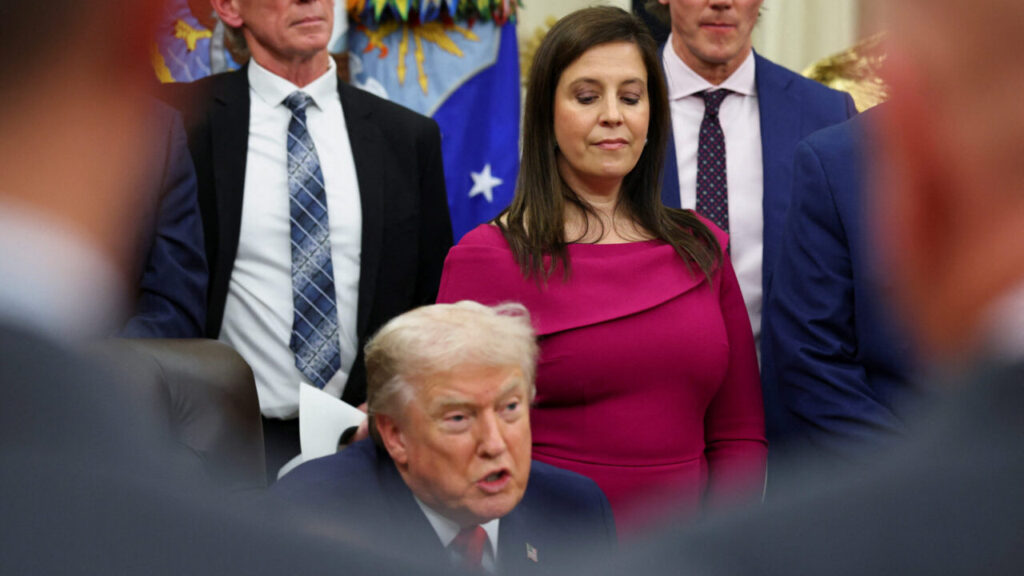Share
SACRAMENTO — The California Senate’s plan to make up the state’s estimated $54.3 billion budget deficit rejects Gov. Gavin Newsom’s proposed cuts to public education and health care programs — and instead takes more money from reserves and delays billions of dollars in payments to school districts.
The Senate’s plan, unveiled late Wednesday, would spend about $8 billion more on public education than Newsom’s plan. But most of that money would be in deferred payments to school districts. It means school districts could go ahead and spend the money and the state would reimburse the districts later.
It’s unclear how the Legislature would pay the districts back next year, when the state could have an even worse budget deficit. The nonpartisan Legislative Analyst’s Office predicts the state will have budget deficits through at least 2024 because of the economic fallout from the coronavirus pandemic.
Education funding is one of many contentious issues that Newsom and legislative leaders must negotiate as they head toward a June 15 deadline to pass an operating budget for the fiscal year that begins July 1. The Senate Budget and Fiscal Review Committee is scheduled to vote on its proposal Thursday. The state Assembly has yet to reveal its plan.
In January, California was expecting a multi-billion-dollar budget surplus as the state boasted a record 10 consecutive years of job growth in the nation’s most populous state. All of that changed in March when the new coronavirus hobbled the nation’s economy and sent California’s tax collections plummeting.
Now state officials are trying to find billions of dollars in cuts to make up for the lost revenue.
Adding to the financial woes, more than 5 million Californians have filed for unemployment benefits and are signing up for government-funded health insurance and other assistance programs — adding billions of dollars in new expenses to the state’s budget.
Newsom has pleaded with the federal government to send the state billions of dollars in additional aid to prevent the most painful cuts to state services.
The Senate’s Plan Would Also Avoid Budget Cuts If Congress Approves New Spending
His plan would cancel $15 billion in budget cuts, mostly to public education and health care programs, if Congress approves additional aid by July 1.
The Senate’s plan would also avoid budget cuts if Congress approves new spending. But their plan gives Congress more time to act. The Senate’s cuts would not take effect until Oct. 1 if the federal money doesn’t arrive.
“There is growing confidence that the federal government will act and the trigger solutions contained in the Senate Version will not be implemented,” according to a memo from the Senate Budget and Fiscal Review Committee.
Aside from public education, the biggest difference between Newsom’s plan and the state Senate’s proposal is health care spending.
Newsom withdrew a proposal that would have given government-funded health insurance to low-income adults 65 and older who are living in the country illegally. The Senate restores that plan but delays it until 2022.
Under Newsom’s plan, fewer older adults would be eligible for Medicaid, the joint state and federal health insurance program for the poor and disabled. And he would eliminate $119 million in spending that keeps more than 45,000 older adults out of nursing homes.
The Senate plan restores all of that spending, plus optional Medicaid benefits that include dental and vision.
To pay for all this, the Senate plan would increase a tax on the companies that manage the state’s Medicaid program to generate an extra $1 billion. But that would only happen if Congress does not approve additional aid for the state.
Newsom has had disputes with legislative leaders in recent weeks over his emergency spending to address the coronavirus outbreak and its economic impact. Lawmakers scolded him for authorizing more than $5 billion in spending without their input.
Newsom’s budget proposal asked lawmakers for an extra $2.9 billion to spend on coronavirus response in the fall in the event that there is a second wave of cases while the Legislature is not in session.
The Senate’s plan would modify that proposal. They would let Newsom spend the money, but the Legislature would have more authority to oversee that spending.



















